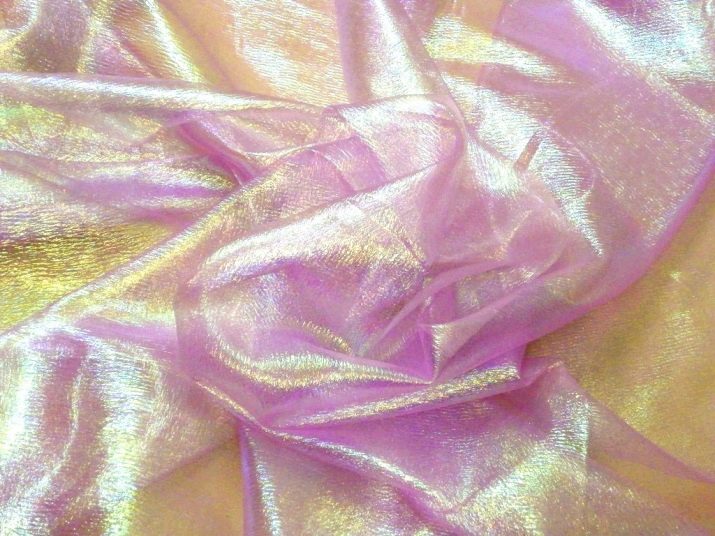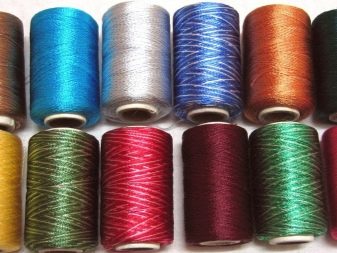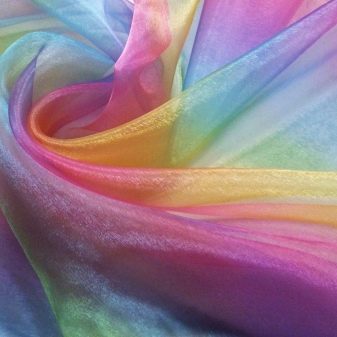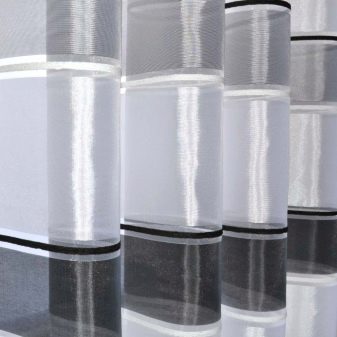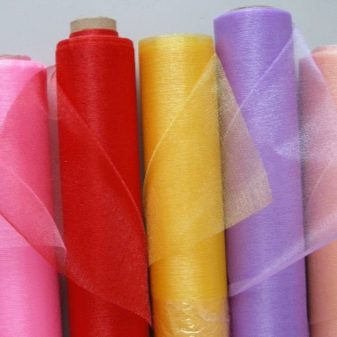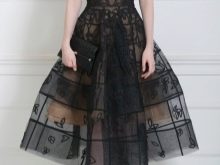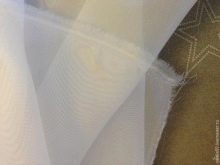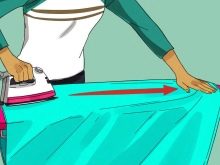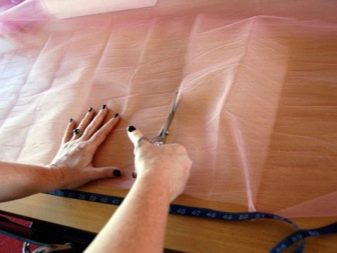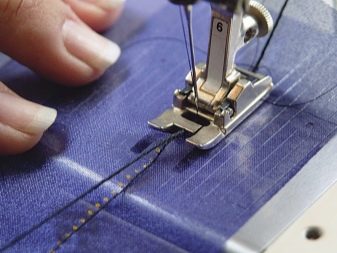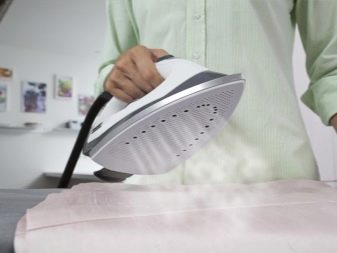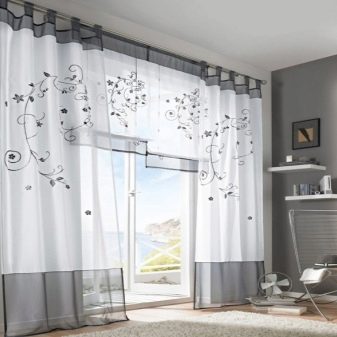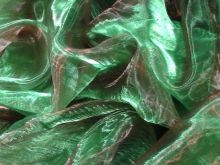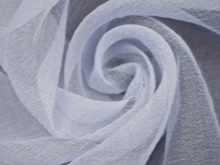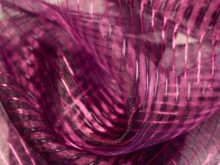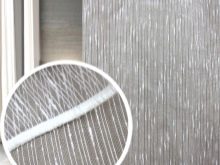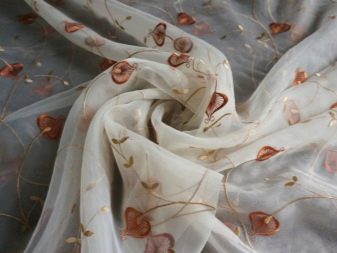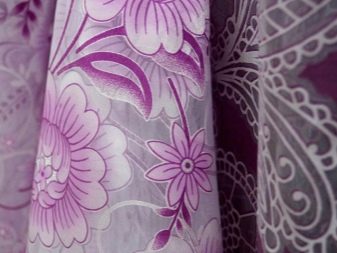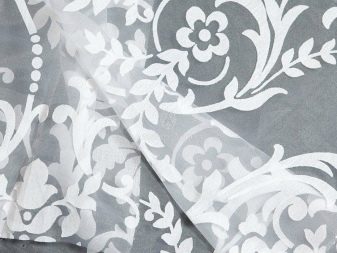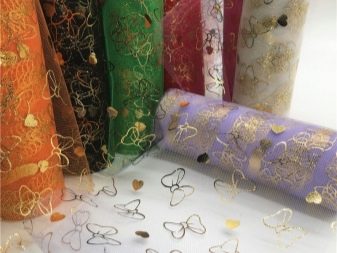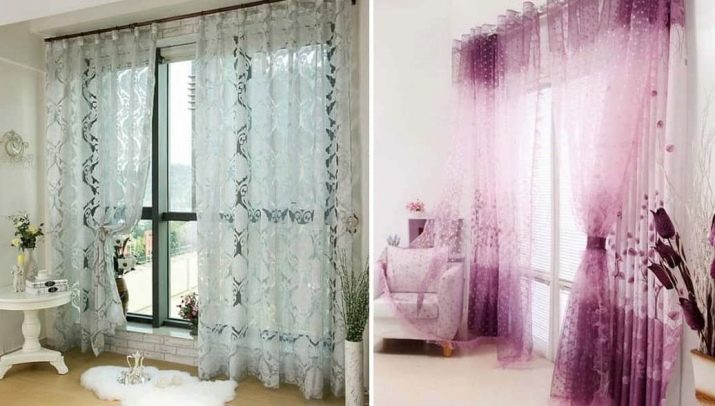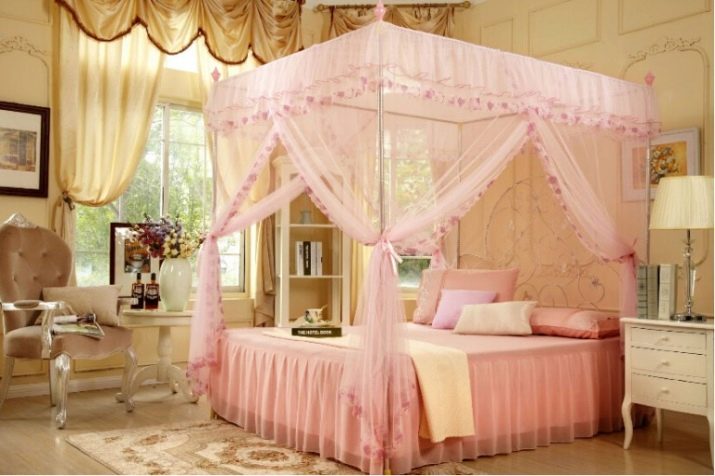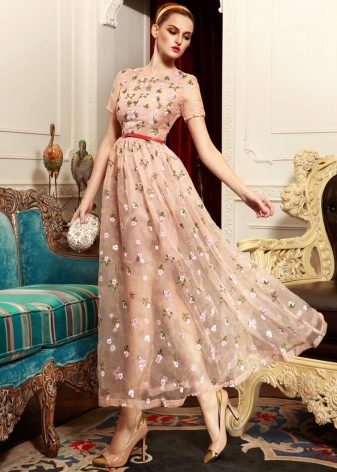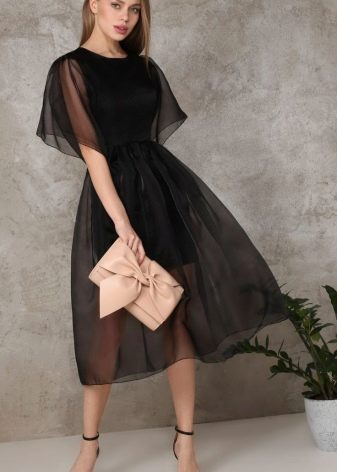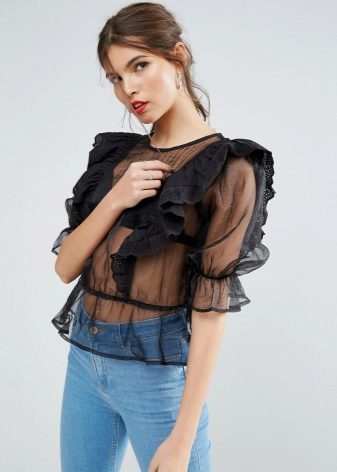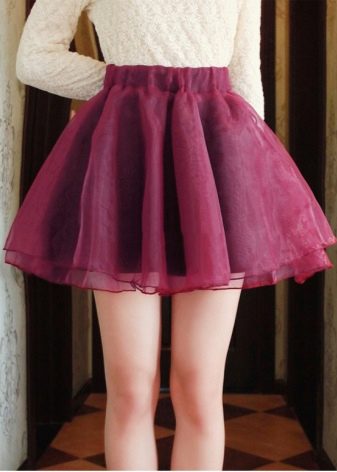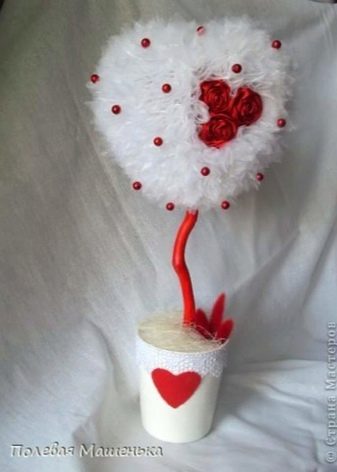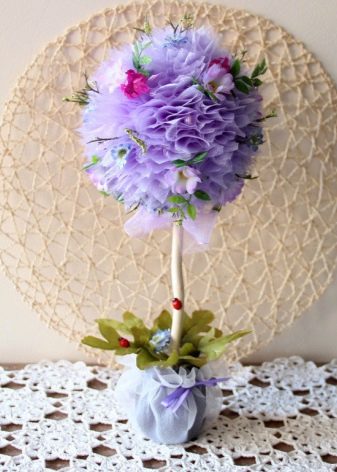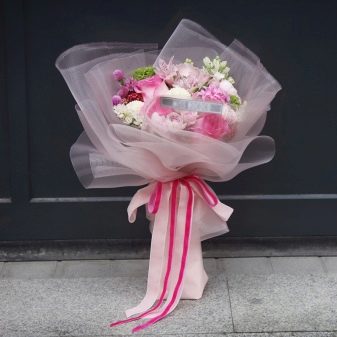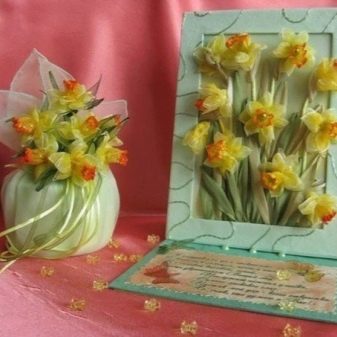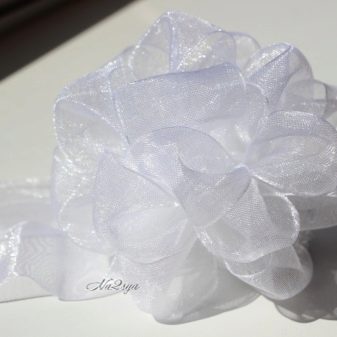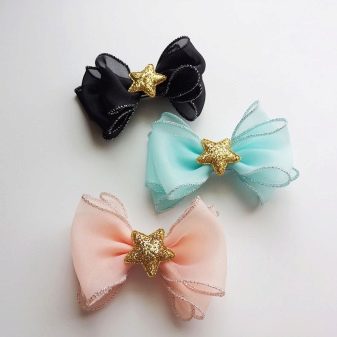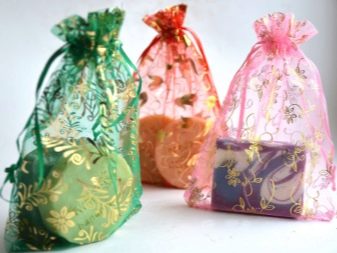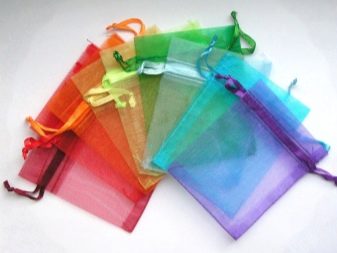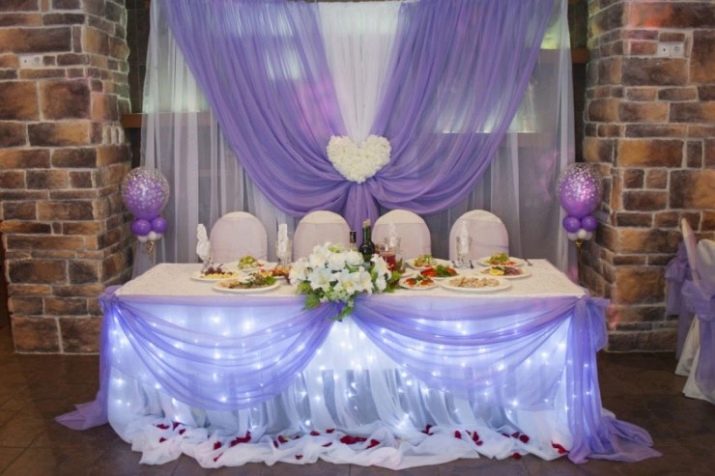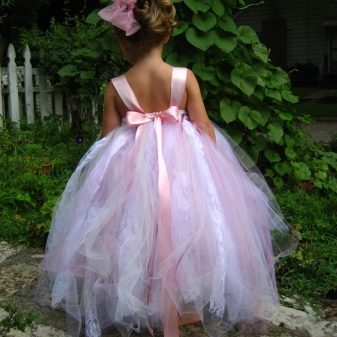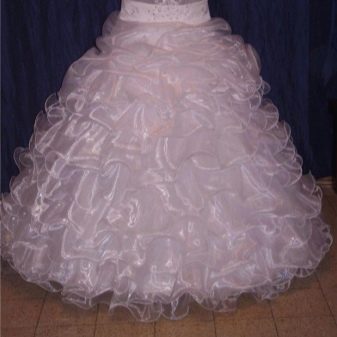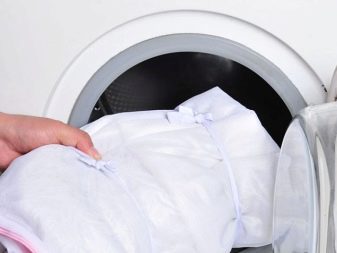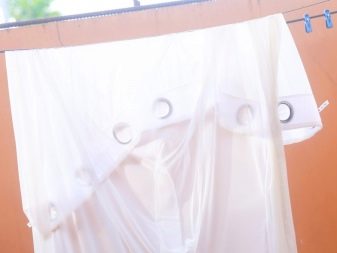Organza is an amazing combination of airiness and beauty. It can be matte or shiny, in one color or with an interesting ornament. It produces very stylish interior items, magnificent theatrical costumes and outfits for various events. The fabric is made from all sorts of fibers or pure polyester. A distinctive feature of the organza is its play and radiance.
What it is?
Organza refers to premium materials. There are two versions concerning the history of its origin. According to one story, she appeared in North America and was created by a well-known company that produced silk materials. According to another version, it began to be produced in the old Uzbek city, which was later renamed Organza.
Organza looks very presentable and beautiful, thanks to which it is very popular all over the world. Initially, only silk threads were used in the production of the material. This implied the high cost of the fabric and the possibility of its acquisition only by noble people. The material production process was very complicated and costly. From the workers required a highly professional skill to get the thread of excellent quality.
Due to the high cost, the material was mainly used as a finish. Organza was decorated with collars, cuffs or evening gowns decorated with it. The material became available due to the appearance of synthetic fibers. Due to the inclusion of polyester yarns, it was possible to retain the original qualities of the fabric and make it more affordable.
As for the description of the fabric itself, it is a beautiful transparent matter, slightly stiff and very durable. Despite its airiness, the organza is very strong and dense. It perfectly retains its shape and practically does not wrinkle. With tactile contact, the fabric is very smooth and slightly cool.
Composition
Currently, the fabric contains in its composition 100% polyester. To make this type of fabric, select the finest fibers. They are incredibly airy and seem absolutely weightless. Due to the strong twisting of the threads, the material is quite tough.
Depending on the method of processing, you can get different types of material. Organza can have a matte or shiny surface. Through the use of transparent and cut fibers, the material sparkles and shimmers with light. The fabric can be sold in solid color, with rainbow tints or with various patterns.
The fabric may also include silk and viscose. Such an organza will cost significantly more than a synthetic counterpart.
Properties
The main advantages of organza:
- practically does not wrinkle and there are no creases on the surface;
- due to high wear resistance, the fabric is resistant to tears and other damage;
- possesses high transparency;
- does not shrink or deform in the process of long-term operation;
- long retains its shape, it allows you to make persistent folds and textured drapes on products made from this material;
- has a high resistance to organic solvents;
- has a very beautiful and unusual appearance;
- The material is easy to clean and very durable.
In addition to the undeniable advantages, the material has several disadvantages.
- Quality organza has a fairly high cost.
- The fabric is a little pricked, in addition, it is transparent, so organza clothing has a lining.
- Matter badly passes air.
- The fabric is quite difficult to cut and handle. In the process of cutting matter strongly slips and spreads in different directions. For cutting products from this fabric should use a lot of professional tricks.
Before you begin sketching and cutting, the material should be ironed until the fabric is smooth.
In the process of cutting the fabric slides strongly Therefore, experts recommend the use of a special bedding made of cotton or flannel. Organza should be attached to it with pins and only then begin to cut out. Transfer the pattern should be using copy stitches. Copy paper or scissors with a toothed blade for this type of fabric is not suitable.
In the process of cutting be sure to make allowances. It is best if they are twice as large as for other fabrics. The edges of the matter are very loose and it is better to stitch them with a double stitching on an overlock or a sewing machine with a zigzag mode.
In the process of bending the edges under the fabric should be put a sheet of paper so that it does not slide. Smooth seams should be very careful. First, all pins are removed, and then the fabric is put on special paper. Strong pressure iron is not recommended.
Ironing curtains made of such fabric is not easy, it is best to do it while the matter has not dried out. For housewives who do not really like domestic difficulties, it is worth choosing curtains from organza-headers or fabrics with a pattern. Then minor flaws in the process of ironing will not be so obvious.
Experts do not recommend hanging curtains of this fabric on the windows, if they go to the south or east side. Due to the constant exposure to sunlight, the fabric can quickly fade and lose its spectacular appearance.
It is important to remember that curtains made of polyester with a strong heat can ignite, so it is better not to use synthetic organza curtains in the kitchen, where the stove is located near the window.
Kinds
Consider the main types of fabric.
- Organza Chameleon favorably differs from analogs in a very effective game of color and shade. At a certain angle of illumination, the fabric can acquire various shades of the primary color. This effect is achieved by combining threads of different tones.
- Reaper It is a material with creases and wrinkles. Such a decorative effect is possible when using a special press during production.
- Coated material is an organza with a golden or silver tint. This material looks very elegant, thanks to the shining particles in the composition of the canvas.
- Organza Crash looks very unusual and is similar in texture to broken glass.
- Jacquard decorated with large beautiful patterns.
- Aluminum fiber fabric It has a strong gloss and incredible strength.
As for the design options for organza, there are several among the most popular ones.
- Embroidery. In the production process, fabrics use threads of different colors, which form a decorative pattern. This type of material is considered the most expensive.
- Etching or burning pattern on the material with the help of chemical technology. A special blend is applied to the organza, which literally corrodes cellulose. It remains a small layer of the grid, which creates a full-fledged pattern or complements it. This type of design is characteristic of the material, which includes silk and viscose.
- Print It is a special design method, when a colorful ornament is printed on the outside of the canvas.
- Laser cutting allows you to cut on the surface of organza the smallest intricate patterns.
- Perforation according to the technique of execution resembles the previous version. Using vector graphics, a special pattern is created, then decorative cuts are made on the canvas.
What type of fabric to choose for sewing, each hostess decides for herself. Material with a pattern or decor requires less effort in the process of ironing and washing.
Where does it apply?
Consider the main uses of organza.
- Due to its transparency and lightness, the material is great for sewing curtains and curtains. Organza looks great in the window openings. It lets in sunlight and fresh air, perfectly decorates any space and creates a feeling of lightness and festivity. Due to the wide choice of types and colors of fabric, curtains can be strict and concise, or vice versa - flashy and showy. From organza you can sew a variety of types of curtains, for example, classical, Roman, with lambrequin, etc.
- In addition to curtains and curtains, organza sews weightless canopies on children's and adult beds, creating a cozy and romantic interior.
- Organza makes various stage costumes and evening wear. For evening wear, organza is often used as a finish.
- Elegant blouses and light skirts are sewn from it.
- Some needlewomen make original talismans from fabric.
- Various organza decorations for flower arrangements are very popular.
- The fabric is perfect for making school bows and various hairpins for girls.
- The material is very popular when sewing gift bags and other packaging.
- Designers use fabric at registration of exhibition and banquet rooms. Also, the material is widely used in the interiors of restaurants and hotels.
- Luxury wedding dresses with a fluffy skirt made from organza are very popular.
Subtleties of care
Organza is extremely durable and practical material. Caring for her is simple, but has certain nuances.
- Things and other accessories from this fabric can be washed in the machine. To do this, select the washing program “delicate” and the temperature regime not higher than 40 degrees.
- If organza products have sequins, beads and other decorative elements, such things should be washed only by hand.
- Pressing organza products in the machine should be at minimum speed.
- For this fabric may use liquid detergents.
- Do not use chlorine based products.
After washing, all things should be shaken and dried in a hung form. It is necessary to avoid direct sunlight on the material so that the color does not fade too quickly.
- It is better to straighten all things carefully, otherwise there will be great difficulties in smoothing the creases in the future.
- To iron things and accessories from organza should be at a minimum temperature. This primarily applies to fabrics with a mixed composition. Ironing should begin when things are not completely dry. It is better to use wet gauze or other cotton fabric. In a pinch, clean paper is allowed.
- Organza, which includes silk and viscose, should be washed in manual mode. It is necessary to wring out such material by hand, after wrapping the product in a terry towel. It absorbs more water and at the expense of its structure will soften the effect on the organ.
- Experts do not recommend ironing a fabric that consists entirely of polyester. If, during storage, ugly wrinkles appear on things or curtains made of organza, it is worth washing the products again and drying them in flattened form. Under the action of gravity, creases and folds will be straightened out. It is also possible to use a steamer.
Before you start to wash or iron clothes from this fabric, you should carefully study the information on the label. This will help extend the life of things and keep them intact for much longer.
About what organza is and how it differs from a veil, see the following video.

